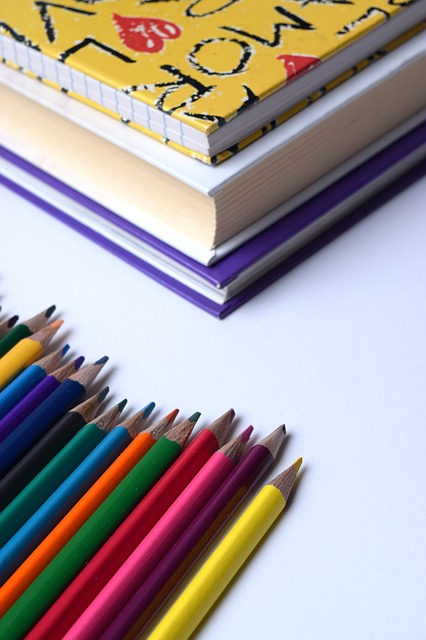How to Bring Positive Psychology into Special Education and Inclusive Classrooms for Students with Autism
How can you help your students discover stillness? joy? authenticity? Positive psychology is the science of well-being, which applied, can bring more positivity and happiness into your classroom. Try investing in these easy “rituals,” or habits, to transform your classroom into an oasis where your students can learn to flourish, no matter their challenges.
1. Give your students permission to be human.
How can you honor your students’ emotions? Where can you offer more space?
 According to Dr. Tal Ben-Shahar, a Harvard-trained leader in the field of Positive psychology, “permission to be human” is the process of acknowledging, accepting, and allowing every aspect of your unique human experience. So much of our disharmony arrives in fighting our natural states. Of course, comportment is absolutely necessary to conform to social norms, and school teaches children how to behave in a way that is congruent with these expectations. But, there is also a way for teachers to give their students permission to be human while still setting up behavioral success in response to societal demands.
According to Dr. Tal Ben-Shahar, a Harvard-trained leader in the field of Positive psychology, “permission to be human” is the process of acknowledging, accepting, and allowing every aspect of your unique human experience. So much of our disharmony arrives in fighting our natural states. Of course, comportment is absolutely necessary to conform to social norms, and school teaches children how to behave in a way that is congruent with these expectations. But, there is also a way for teachers to give their students permission to be human while still setting up behavioral success in response to societal demands.
Transformation: Create a calm-down corner where your students can go whenever they feel the need for some alone time or self-expression. Fill this space with paper, art supplies, and journal pages, and encourage your students to write or draw out their feelings when needed. The permission to be human is the permission to express and accept any emotion in order to engage in self-love and self-acceptance. For another resource on this topic, see our article on cool down spaces.
2. Allow your students to define their own norms.
How well can your students make their own choices?
A self-concordant goal is one that reflects true authenticity and inspires intrinsic, meaningful action. Goal-setting occurs on a micro-level through daily choices: at every moment in your life, you have a choice. These choices can emanate from outside pressures, internal drives, or both. To facilitate the development of self-concordant goals, students need to learn how to make authentic choices and decisions at every stage of life within the limits of their realities.
Transformation: Use sentence-completion exercises to help your students get in touch with their inner thoughts and feelings. Each morning, ask your students a simple sentence-completion question, such as, “If I were more kind today, I would…” or “If I were more focused today, I would…” Allow your students a few minutes to write down, share aloud, or sketch the first 3 or 4 things that come to mind, but do give them too much time to second-guess their answers. Ask them how they can incorporate their answers into choices they can make throughout the day. This is also a helpful activity when working on goal-setting or when making a big decision.
3. Inner stillness is found through the breath.
How can you help your students calm down during times of stress? Where can you bring mindfulness into your classroom?
Research now demonstrates the powerful impact of meditation and other mindfulness activities to invite stillness, quiet, and peace into your life. Through closely watching your breathing and bringing awareness into your body, you can bring yourself into the present to reduce stress and enjoy the simplicity of living in each moment.
 Transformation: At least once a day, try to find a time to incorporate mindfulness practices into your curriculum. Help your students focus after breaks like recess by doing a short five-breath meditation. Sitting in their chairs, ask your students to close their eyes and take a few minutes to just feel their bodies in space and listen to the sounds around them. When they seem settled, invite them to take five, slow deep breaths together, paying attention to feel their breaths both in their bellies and their nostrils. Once they have all opened their eyes again, ask them if they feel any changes after breathing together. For another exercise, take a look at our Soles of the Feet Activity.
Transformation: At least once a day, try to find a time to incorporate mindfulness practices into your curriculum. Help your students focus after breaks like recess by doing a short five-breath meditation. Sitting in their chairs, ask your students to close their eyes and take a few minutes to just feel their bodies in space and listen to the sounds around them. When they seem settled, invite them to take five, slow deep breaths together, paying attention to feel their breaths both in their bellies and their nostrils. Once they have all opened their eyes again, ask them if they feel any changes after breathing together. For another exercise, take a look at our Soles of the Feet Activity.
4. Use movement to transform tension.
How can you incorporate movement into your curriculum? Where can you find space for therapeutic movement?
Exercise is also an important aspect of stress reduction, especially for students who may have difficulty sitting still in a classroom all day. If you feel that your students are becoming restless or upset, try remedying their tension with movement.
Transformation: Try yoga for a static movement that is easy to do at any time throughout the day. Yoga both calms and relaxes students while giving them the opportunity to stretch and move their bodies. Also consider dance as a form of therapeutic movement that you can use with students who have pent-up emotional energy waiting to be expressed.
5. Play is powerful.
Where can you find space for play? How can you cultivate joy in the classroom?
Students often dislike school because it feels like work rather than play. Research shows that young adolescents begin to lose interest in school because of their perceptions of this distinction. Of course, school does require hard work, but it can also be fun.
 Transformation: Use play to cultivate joy in the classroom. Play can take many forms – traditional games and role-plays or even a small moment of silliness. Consider using laughter as way to engage your students and lighten up the mood of the room in stress-inducing times. Use funny voices during a reading, or turn a math lesson into a number scavenger hunt. The more your students feel that they are engaging in play, the more the more connecting and excited they will feel about school.
Transformation: Use play to cultivate joy in the classroom. Play can take many forms – traditional games and role-plays or even a small moment of silliness. Consider using laughter as way to engage your students and lighten up the mood of the room in stress-inducing times. Use funny voices during a reading, or turn a math lesson into a number scavenger hunt. The more your students feel that they are engaging in play, the more the more connecting and excited they will feel about school.
Through introducing just a few small rituals into your classroom routine, you have the power to inspire authentic development, encourage honest decision-making, and empower your students through acts of self-care like meditation and yoga practices. In addition, fostering an atmosphere of play will increase engagement and lead to a positive, joyful environment. Positive Psychology is a powerful tool to craft meaning in your classroom and motivate your students to achieve both personal and academic success.
Ben-Shahar, T. (2007). Happier: Learn the secrets to daily joy and lasting fulfillment (1st ed.) New York: McGraw-Hill.
Ben-Shahar, T. (2016). Certificate in Positive Psychology. Lecture Series, Wholebeing Institute.

Arianna Riccio
Arianna Riccio is a current Ed.M candidate in the Human Development & Psychology program at the Harvard Graduate School of Education. She aspires to pursue a PhD in Clinical/Counseling Psychology to become a practitioner, researcher, and consultant. She received a BA in French (Psychology minor) from Franklin & Marshall College in 2014 and served as an AmeriCorps*VISTA for the Boys & Girls Club of the Flathead Reservation in northwest Montana in 2016. Arianna’s hobbies include yoga, meditation, learning Capoeira, and having spontaneous discussions about the meaning of life.




